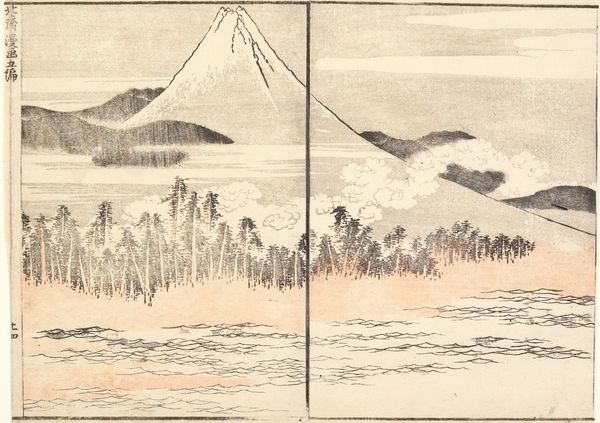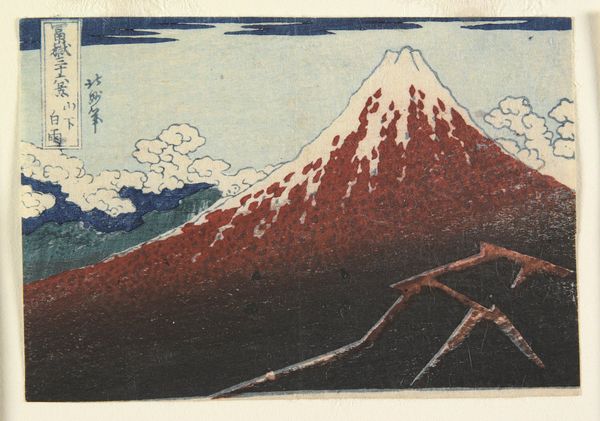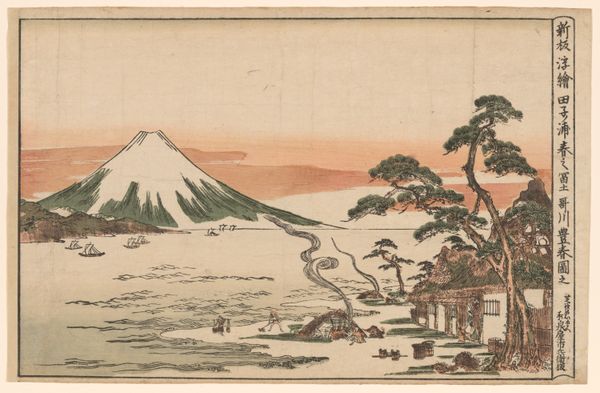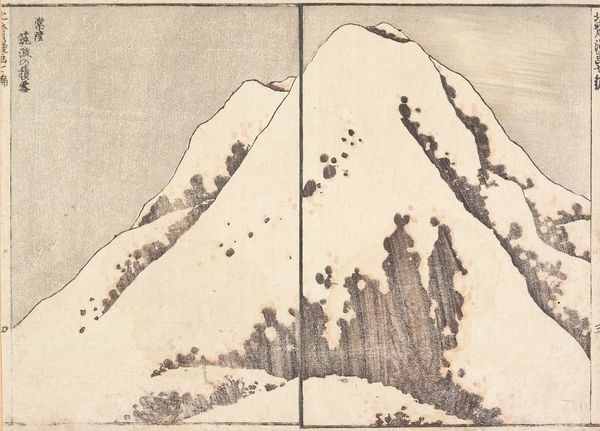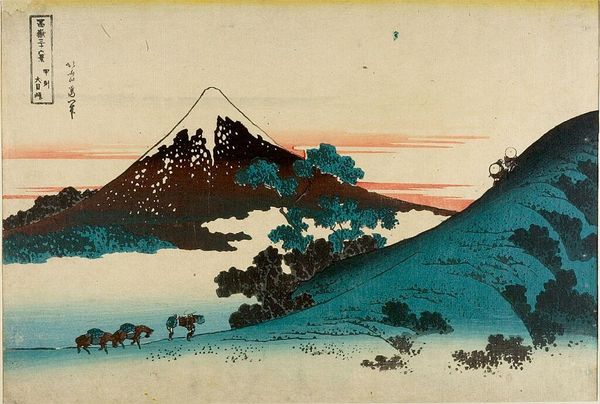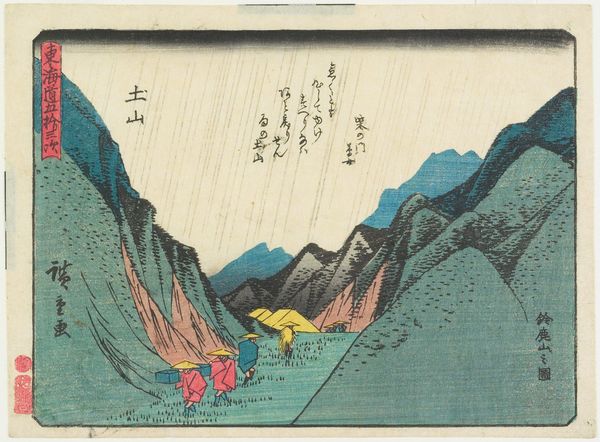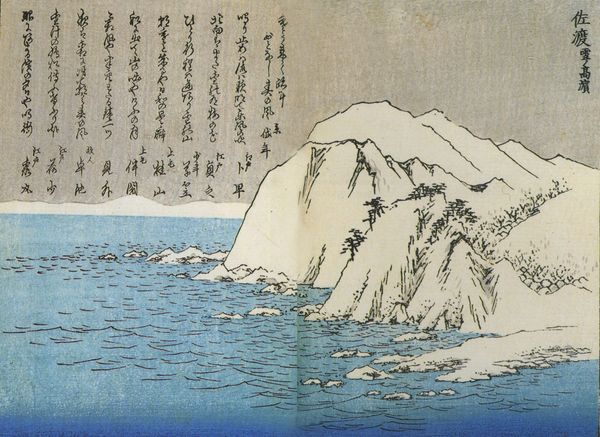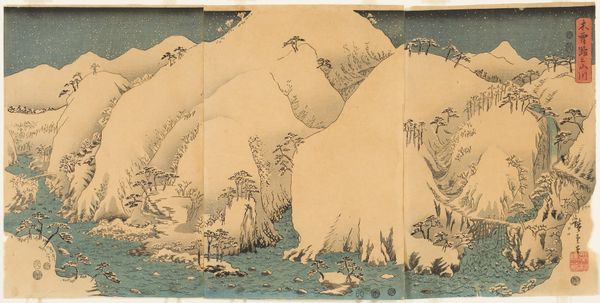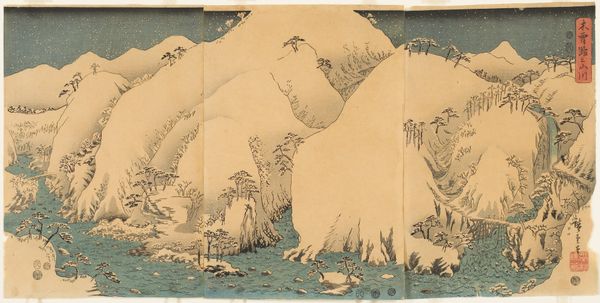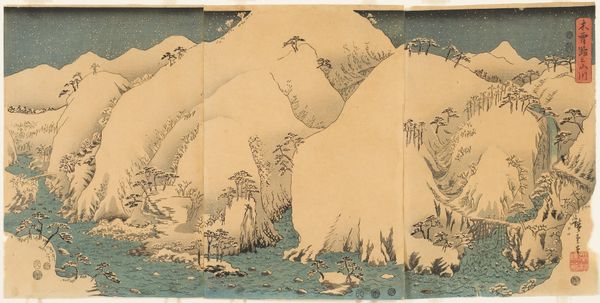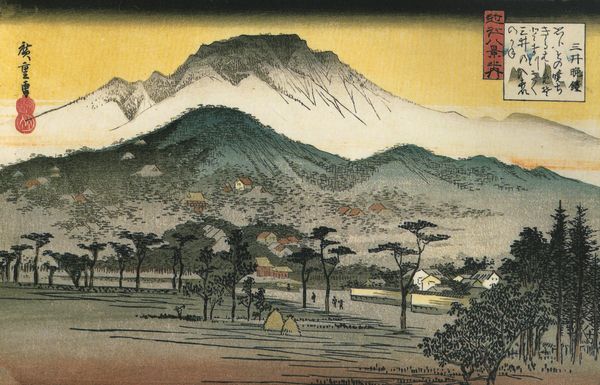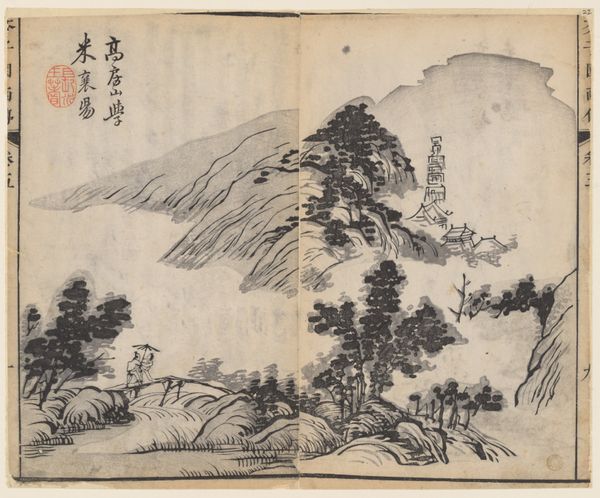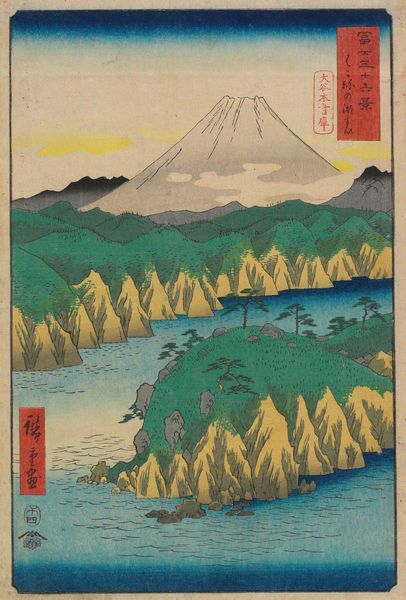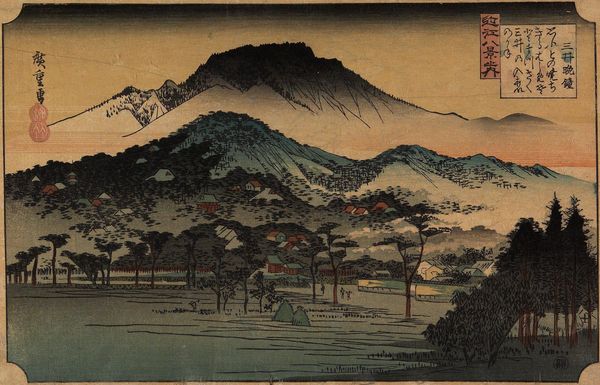
print, ink, woodblock-print
# print
#
book
#
asian-art
#
landscape
#
ukiyo-e
#
ink
#
woodblock-print
#
geometric
Dimensions: 8 3/8 x 10 1/8 in. (21.2 x 25.7 cm) (sheet)
Copyright: Public Domain
Editor: This is Hokusai’s “Mishima Pass in Kōshū Province,” created around 1817. It’s a woodblock print in ink and color. It's interesting how the artist divides the scene onto two panels, with the mountain dominating the left and these large, expressive clouds building on the right. What do you see in this piece? Curator: What strikes me is the interplay between geometric precision and organic form. Note the stark, almost diagrammatic representation of the mountain's crags on the left. Hokusai masterfully renders depth and volume through calculated lines, each defining planes and edges. The textural variation, though subtle, emphasizes the geological form, which provides contrast with the undulation on the right panel. How do you feel about the artist's decision to present two different mountains in one view? Editor: It seems a bit disruptive – I am not quite sure about that… Is that two different mountains? Curator: Perhaps we should read it instead as a mountain and what happens with space behind a mountain in our sight. The mountain appears massive, yet flat on one panel. On the right, vaporous clouds create their own structure through accumulation, a stark departure from the mountain's firm, geometric character. Do you observe how this relationship, the solid and the ephemeral, influences your interpretation of the scene? Editor: I see what you mean now. It's less about representing a specific place and more about playing with these fundamental shapes and how they relate. It makes it more about seeing rather than just looking. Curator: Precisely. Hokusai directs our gaze to consider the very essence of form, space, and representation. We, as viewers, complete the dialectic. Editor: I guess I never would have thought of that on my own. I was stuck on what the picture was "of" instead of what it *did*. Curator: Understanding what the artwork “does” moves us closer to appreciation and comprehension.
Comments
No comments
Be the first to comment and join the conversation on the ultimate creative platform.
